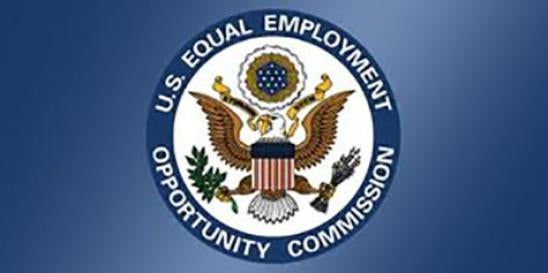The Importance of Construction Timelines
Construction schedules are the most critical piece of any construction project. They show in visual form the many steps and procedures fundamental to project completion. So, it follows that a trial graphic created to represent such a crucial project document is equally crucial to the presentation of your case.
The clearer the graphic representing the pertinent components of the construction schedule, the clearer the jurors will be on the series of events—and the point where things went wrong.
Construction schedules (like projects) come in all shapes and sizes: whether it’s for a single-family home, a development of condominiums, a commercial property, or a large, multi-use manufacturing or chemical plant. Nevertheless, they all have a unified set of characteristics that need to be represented, no matter which side of the case you’re on.
The overall intention of the schedule is to display the allocation of equipment, material, and labor resources with respective project work tasks over a designated period of time. In essence, it shows who and what go where and when. But they can also be packed with additional information, including suppliers, important dates, meeting times, and the various teams assigned to each step. As a result, the schedule can look a bit busy.
As the above graphic (which is relatively simple as such schedules go) demonstrates, there are a lot of parts in play. Each task has its own timeslot, but each new task is often dependent on the completion of the previous and often also on the acquisition of certain permissions. Moreover, tasks frequently coincide or overlap.
Is the schedule a graphic? Yes. Does it tell a simple story? Absolutely not. So, the natural question is: With such a messy, interlocking chain of events, how do I present my client’s story in a way the jury will understand?
The most efficient and effective way to communicate the essence of your construction schedule is through a construction timeline graphic. The goal of this graphic is to provide context for your arguments, without needlessly overwhelming the jury with irrelevant schedule information (of which there is usually a fair share).
Much like a construction schedule distills the key tasks and deadlines of the construction project, your construction timeline will distill the construction schedule. It will direct the jury down a logical, chronological path leading to the issue or incident in question.
Even so, construction timelines usually still contain a substantial amount of data. We can partner with your legal team to sort through the construction schedule, pick out the key information, and display it in a simple manner. Ultimately, the goal is to show the jury your client’s role in the project, and why your client was not responsible for any failures or missed deadlines.
Telling a Story with Your Construction Timeline
Before diving right in to the creation of your timeline, consider the following:
WHAT ARE YOU TRYING TO SHOW?
The jury needs to see a series of logical events leading them step by step to your conclusion. When did the problems occur? In what order? Where were the missed opportunities or mistakes? Where is the cause and effect?
HOW MUCH DETAIL IS NEEDED?
You’re trying to do the jury a favor and lighten their cognitive load. Keep only the minimum amount of information required to tell your story and rebut the story you expect your opponent to tell.
What can be cut and what is essential? Which dates and events are inconsequential? Can the original schedule be simplified into only major categories on your timeline, or does it need subcategories to make your point?
WHAT’S NEXT?
Once you have translated and simplified the data contained in the construction schedule, you can identify a clearer sequence of events. You can then begin plotting out that chain of events in the form of a story jurors will understand.
Building Your Construction Timeline Trial Graphic
One of the best ways to present your timeline is through a series of slides. This technique allows you to build up the jury’s understanding from a simpler foundation, introducing additional detail without overwhelming them.
To demonstrate, we’ll walk you through the creation of a hypothetical construction timeline. In this case, we want to emphasize to our jury the causes for—and consequences of—a lengthy delay in the construction of a security elevator:
1) We start simple, using a straightforward timeline to establish relevant agreed-upon completion dates.
2) Our next slide introduces colored bars along the timeline to denote the respective completion times of major design and construction tasks, including that of the security entrance in question (within the larger construction period).
3) We then break down the construction of the security entrance into key steps, as well as the days allotted for each step.
4) Finally, we reveal the actual security entrance completion time. This slide points out the length of the delay, its effects on the construction project as a whole, and the specific causes of the delay. Icons come in handy here to serve as quick references for the jury as to the types of problems that occurred.
Maximizing Your Construction Timeline’s Potential
- Include photos of buildings, materials, products, or personnel in question
- Use different colors to distinguish different tasks, types of work, and/or responsible parties for maximum clarity
- Use colored bars, dots, diamonds, bolding, font hierarchy, and/or stars to denote key milestones and goals
- Consider including functionality that connects your timeline to other graphical elements
This last point adds a nice touch and helps to keep your graphics clean. You can create clickable elements that link or animate to more detailed info, such as a checklist or document callout (e.g., specific contract language). You can also zoom in to particular phases in the construction process, breaking them down in more detail. Such functionality will allow you to quickly highlight key points while main
Recently, the EEOC announced its top priorities for the coming years in its Strategic Plan for 2022-2026. We hit the highlights of the goals and plans for implementation below so that you can start preparing for the upcoming enforcement strategies.
Goal 1: Remedy employment discrimination and obtain relief for victims of discrimination
The EEOC plans to implement Strategic Enforcement Plans to combat discrimination, use its resources to combat systemic practices, eradicate discriminatory policies and practices in federal agencies, and seek remedies for relief to individual victims of discrimination. None of this is new or surprising. However, the EEOC’s focuses are good to know:
- More equitable relief. By FY 2025 the EEOC wants 90% of its conciliations and litigation to seek equitable relief as a remedy. Equitable relief is any non-monetary relief that directly addresses the discriminatory employment practices at issue and provides remedies to the aggrieved individuals or prevents similar violations in the future. This could mean we will see more requests for policy revisions, employee or supervisor training, or consent decrees.
- Achieve successful resolutions in litigation. To achieve successful resolution in litigation for 90% of lawsuits by FY 2025, the EEOC plans to train its field staff and trial attorneys on identifying and investigating systemic discrimination.
- Dedicated investigative staff members for systemic investigations. The EEOC plans to have at least two dedicated staff members in each district to conduct investigations of alleged systemic discrimination.
- Measure conciliation agreements more closely. The EEOC plans to buckle down on monitoring conciliation agreements by implementing streamlined and standard procedures, internal tracking, and training for field staff. This could mean that local staff will have less leeway in finding acceptable conciliation terms.
Goal 2: Make the public aware of discrimination laws
The EEOC plans to use technology and “innovative strategies” to expand its reach and target “vulnerable workers and underserved communities.” To help prevent discrimination and resolve EEO issues, the EEOC wants to target “small, new, and disadvantaged/underserved employers.” As part of the strategy, the EEOC plans to:
- Use data and technology to create outreach strategies;
- Update existing guidance and training materials (see the guide released this week related to the Rehabilitation Act);
- Create new resource tools; and
- Partner with other federal agencies (we blogged about the EEOC and DOL teaming up last week).
We should all keep an eye out for these resources as they should provide insight on what investigators will be looking for.
Goal 3: Align the EEOC’s culture with its vision and mission
The EEOC is going to push for its own culture to align with its values. As part of its plan, the EEOC will recruit and develop employees; enhance diversity, equity, inclusion, and accessibility in its workplace; develop leadership and succession plans; expand the use of technology to better serve the public; and “leverage the use of data, analytics, and information management to support, evaluate, and improve the agency’s program and processes.”
Takeaways
So far, the EEOC is true to its word as just a few days ago it issued the disability resource guide linked above and it recently announced a plan to team up with the DOL. It appears that the EEOC wants to crack down on systemic issues, so investigators are likely to ask for broader information to discover that kind of problem. Also, we may see broad requests in conciliation and settlement agreements to require ongoing monitoring or reporting.
The EEOC’s announced plans make it all the more important that you consult your legal counsel about your policies and practices and any time you receive notice of an EEOC charge.
taining the context of the timeline.
Conclusion
Construction timelines are outstanding visual aids that mold messy construction schedules into persuasive stories, custom-built for your claims. In fact, the step-by-step approach we provide above can be adapted to a variety of issues and evidence, depending on what is key to the jury’s understanding of your client’s case.
As with any graphic, we recommend practicing several communication rules of thumb. Remember, the goal is not to just list events on a slide—you should stay focused on the story you want to tell and the clear, logical steps that will bring the jury along with you.





 i
i


